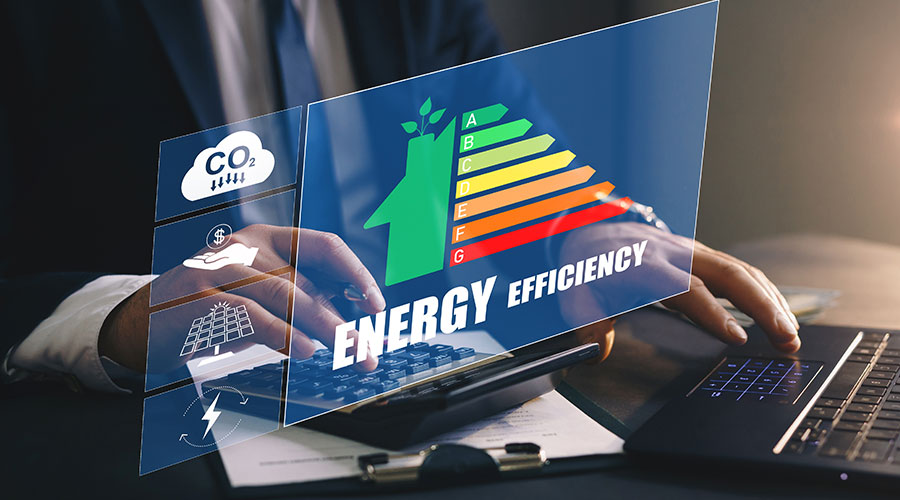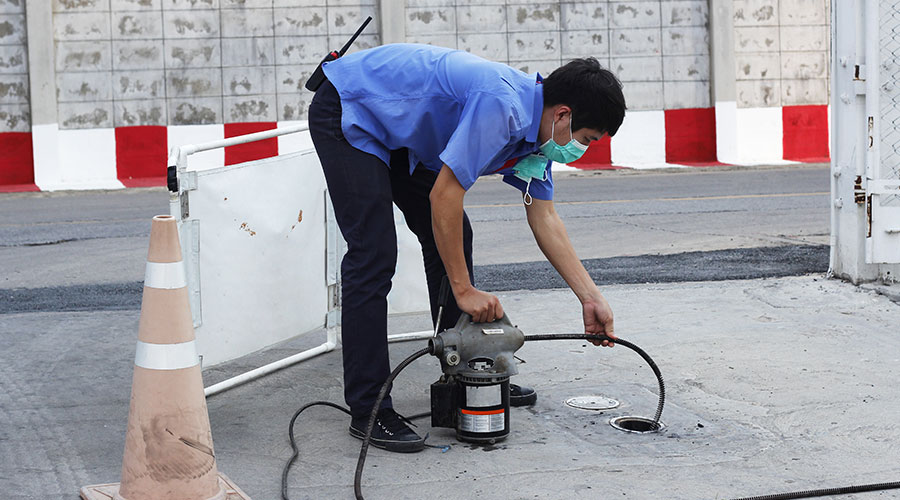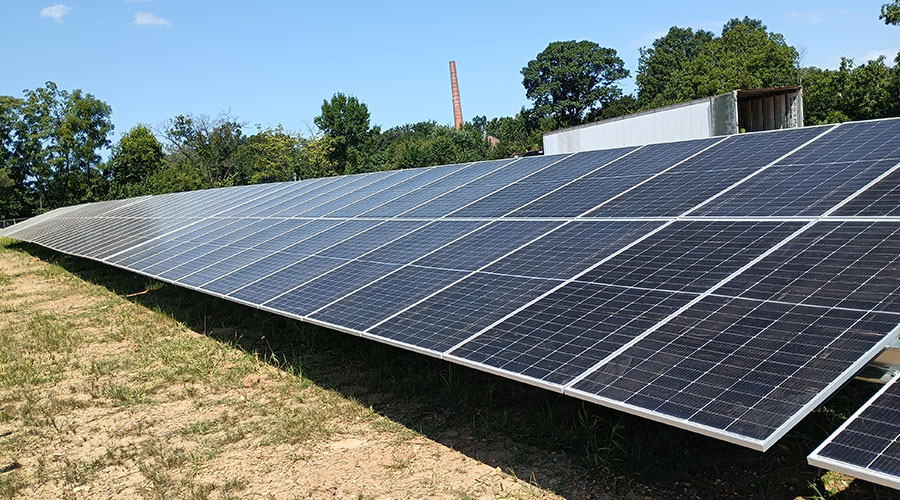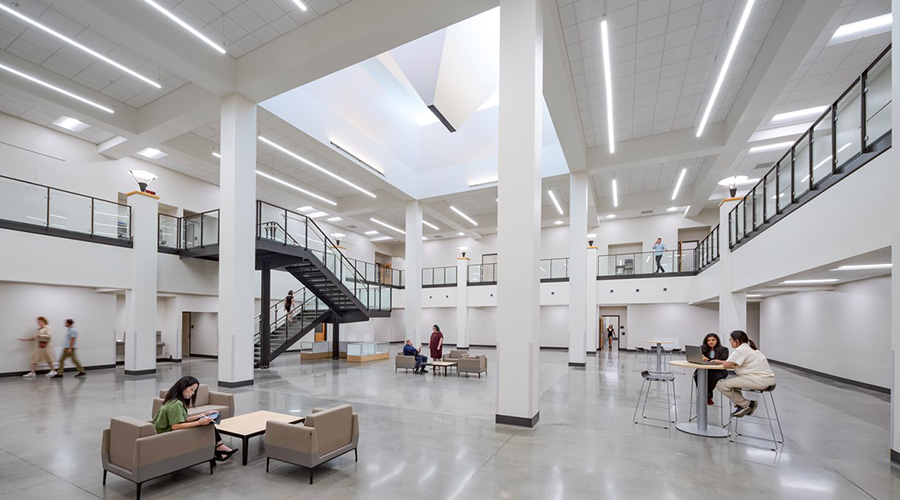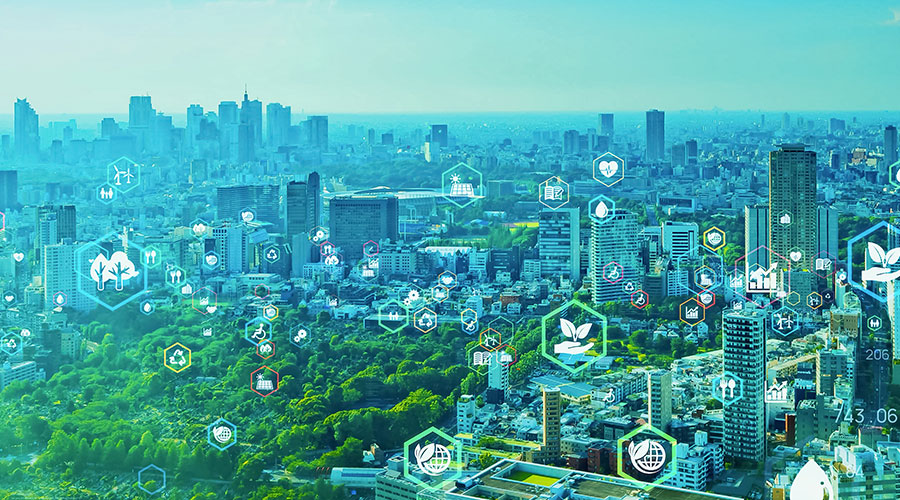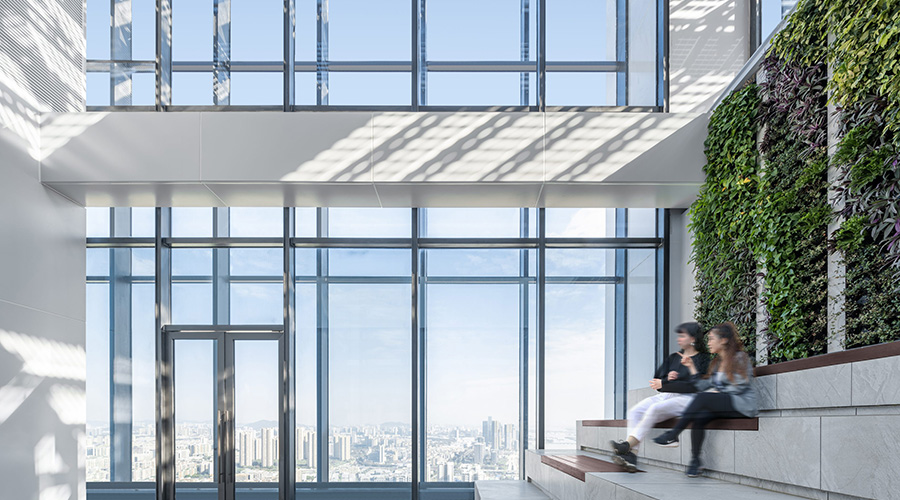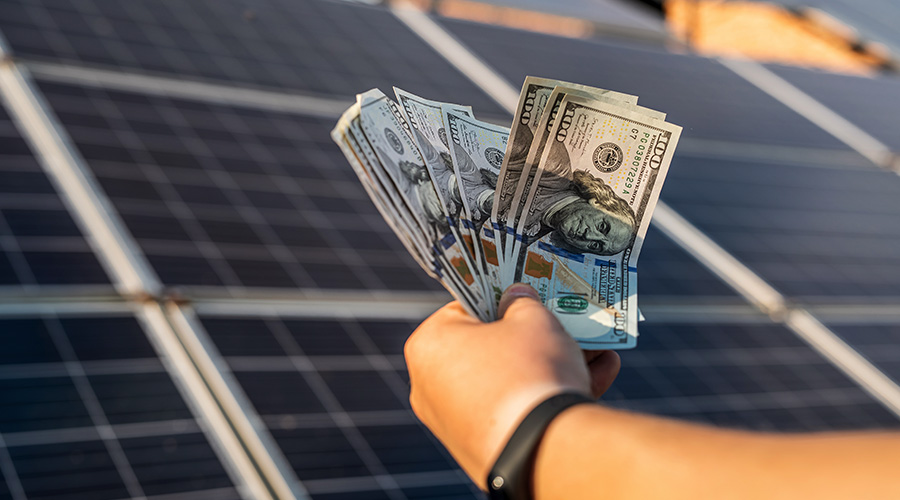Catholic University of America Leads with Solar Energy Project
Catholic University of America’s solar array farm boosts sustainability efforts on campus and beyond.
By Amy Wunderlin, Contributing Writer
Clean energy projects can help organizations meet sustainability goals, maximize financial opportunities and become leaders in their community. These considerations were all a priority for the Catholic University of America (CUA), which recently completed the Washington D.C. metropolitan region’s largest urban solar array farm.
The project, which is made up of nearly 14,000 solar modules and spans 24 acres, is projected to avoid 7,087 metric tons of greenhouse gas (GHG) emissions annually.
Born out of CUA’s continued history of dedication to clean energy, as well as a need to make use of underutilized land around the campus, the goal was to make better use of a large area of secondary woodland with the lightest possible touch.
“We’ve always been focused on improving our contributions to energy conservation and sustainability. … So, we examined underutilized land on our West Campus and worked with different consultants, including Optony, on if and how solar might work out there,” says Debra Nauta-Rodriguez, university architect and associate vice president for facilities planning and management, CUA.
Once the installation of a solar farm was established as a viable project, the main goal became to generate renewable energy not only for university use but to share with the community at large.
“The solar project demonstrates our commitment to the environment and our leadership in sustainability,” says Nauta-Rodriguez. “It was a huge team effort that included university personnel and multiple consultants specializing in various feasibility, legal and financial apsects of the project in addition to partner firms providing the technical project management, engineering and construction expertise. It was amazing to see that all come together and be successful.”
The university broke ground on the 7.5-megawatt (MW) DC (6-MW AC) ground-mounted solar array in partnership with Standard Solar and under the consult of Optony in fall 2022, and the West Campus Solar Array began energy production in summer 2024.
“It’s unique in an urban environment for a project this large to come online,” says Jonathan Whelan, vice president of Onsite Energy Programs at Optony. “It’s really a great use of the of the District of Columbia’s policies trying to support solar energy and particularly local solar energy, and in a way that’s really kind of unprecedented there because land is so rarely available at this scale.”
Sustainable future
Clean energy is certainly not new for CUA, which was already offsetting on-campus electricity consumption with a combination of onsite solar and wind renewable energy credits. In 2009, the university installed 2,600 solar panels on six buildings and above one parking lot. CUA additionally has offset 100 percent of its electricity usage through the purchase of renewable energy credits (RECs) since 2012.
The West Campus Solar Array only builds on that by maximizing environmental benefits while leading to project revenues and overall financial benefit to the university, the local community and the greater D.C. area.
“The university is able to put into productive use this land that was otherwise not really used for much,” says Whelan. “And to have a lease payment that comes out of that, that the university can use to continue their mission of education, and so it really helps everybody.”
While it’s easy to get caught up in financial goals met through the ground lease with Standard Solar, the project has also become a symbol of sustainable leadership throughout the district and higher education community at large.
“I don't want to characterize it as a financial benefit because it was much, much more than that,” says Nauta-Rodriguez. “That might have been the initial impetus for trying not to just let that land stay undeveloped over there, but it’s just a great project and a great demonstration of a really small university’s leadership in this area.”
As a result, CUA has seen growing interest from the higher education community and other Catholic organizations who are looking for their own ways to introduce solar.
“There’s been a lot of community interest and engagement. We lead tours for the community once a semester and it’s been really wonderful that we’ve been able to bring solar a lot closer to home for a lot of people,” says Gabrielle Choate, director, Office of Campus Sustainability, CUA.
In addition to inspiring a community-wide focus on clean energy projects, the university is helping to ensure anyone can have access to clean energy. The array provides locally generated clean energy to households and businesses within the district. Residents are able to subscribe to the utility grid and buy energy from the project at a discount that is seen in a credit on their utility bill.
The university estimates the 20-year projected savings to district subscribers at $3.5 million.
The community solar program “allows off takers to be able to take advantage of this in the community, in the neighborhood, in a way that they might not be able to take advantage of solar themselves if they are renters or if they've got small roofs or if they have shaded homes,” says Whelan.
Prioritizing solutions
In line with the university’s sustainability goals, much care was taken during the construction phase to preserve heritage trees and the lower third of the forest that covers the property.
Trees that were cleared from the site were donated to the district’s Urban Forestry Division for use as birdhouse kits for D.C. school students to assemble and used to build portions of the D.C. Youth Leadership Development Program’s Oasis Reserve near Laurel, Maryland. Some of the trees were also mulched for use on campus.
Sharing these changes with the community was a hurdle, especially for students who watched the site being cleared of trees. The impact, however, was less than the number of trees planted on campus every year, which Choate says is between 100 to 200 trees a year.
“We’ve planted more trees on campus within the last few years than were removed, but it was a pretty significant visual,” says Choate.
Following the completion of construction, a native pollinator meadow was also planted beneath the solar arrays, which is complemented by a partnership with the D.C. Beekeepers Alliance to introduce beehives to the property.
In addition, stormwater management devices were installed to minimize runoff from the site and additional tree plantings are planned for the perimeter of the site.
Another bonus is that the solar array promotes economic development in the district by supporting new jobs in solar facility design, construction and energy management, as well as offering significant learning and research opportunities for CUA and district K-12 students.
By partnering with area high schools, students can visit the site and explore career paths in clean power technology, and university students can access web-based energy production monitoring as a teaching and research tool.
“It’s been a great educational tool for our students and for others in the city,” says Choate. “With such a significant site, we’ve been able to educate our community about solar and why it’s important.”
Amy Wunderlin is a freelance writer based in Fort Atkinson, Wisconsin.
Related Topics:






